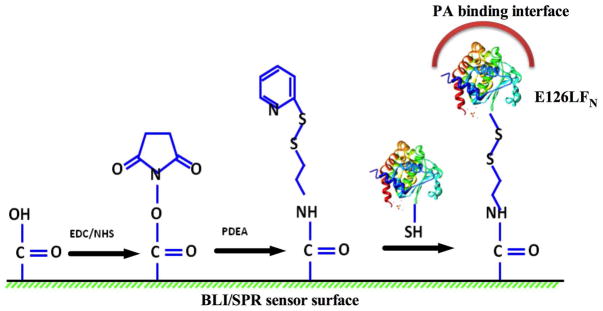Figure 1.

Chemical coupling to orient PA prepore on Biosensor surfaces. EDC/ NHS activated BLI or SPR biosensor surfaces were covalently modified with PDEA (methods) to produce a thiol-reactive coupling surface. E126C LFN (PDB 1J7N) (33) was covalently immobilized onto the sensor via a disulfide linkage in order to position the LFN–PA prepore binding interface to point away from the biosensor surface. This orientation insures that PA prepore will bind to the thiol linked immobilized LFN in a manner where the PA pore beta barrel will form in direction pointing away from the biosensor surface (see PDB 3KWV) (10).
